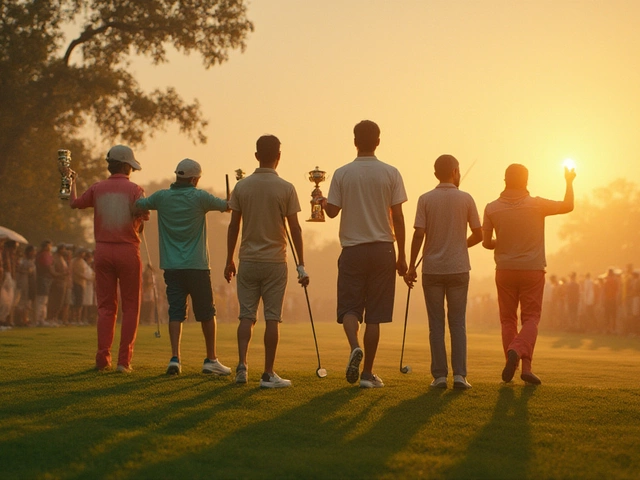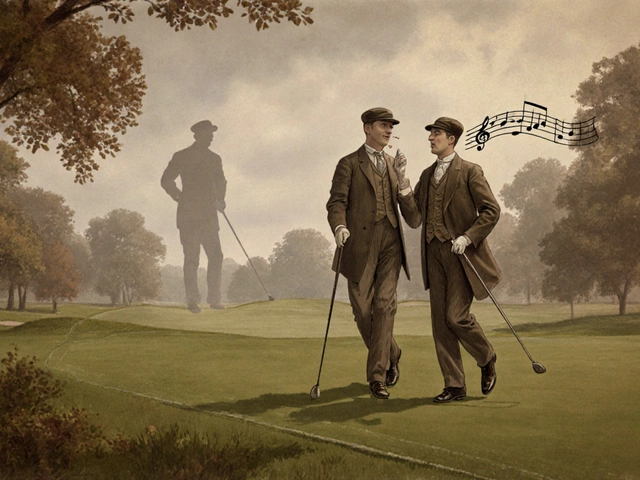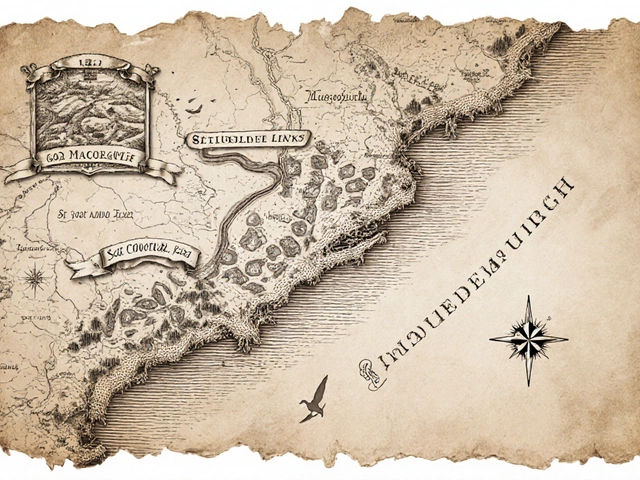Ask ten golf fans about the greatest of all time and you’ll probably get ten different answers—some will shout Tiger, others Jack, while a few stubborn folks might surprise you with Nicklaus or even Player. Golf, more than maybe any other sport, has this wild mix of stats, stories, and opinions that make the hunt for the GOAT (Greatest of All Time) endlessly interesting—even a little heated. You want protests? Bring up that Tiger Woods and Jack Nicklaus played in totally different eras, with different gear, courses, money, and pressure. It’s like comparing a vintage Mustang with a modern Tesla: both iconic, completely different beasts. And then there’s the way golf changes—remember those balata balls, persimmon drivers, or even course layouts before ‘Tiger-proofing’? It all matters.
The Crown Contenders: Who Are the Obvious GOATs?
Tiger Woods. Jack Nicklaus. Those two names dominate the conversation, like Messi and Ronaldo in football or Federer and Nadal in tennis. Let’s start with Tiger Woods: turned pro in 1996, smashed through golf’s stodgy old image with that iconic red-shirt-on-Sunday swag, and brought millions of new eyes—myself included—into the game. His 82 PGA Tour wins (tied all-time with Sam Snead), 15 majors, and the “Tiger Slam”—holding all four major titles at once—are the kind of records that make even non-golfers raise eyebrows. There’s the 2000 U.S. Open, where Tiger crushed the field by a jaw-dropping 15 shots at Pebble Beach. The level of dominance? Insane. He changed how players approached fitness, mental toughness, even strategy. It’s tough to find any stat where Tiger doesn’t own, tie, or threaten a record. Even after spinal fusion surgery (which sounds more like a sci-fi plot than a golf comeback), he roared back to win the 2019 Masters—a moment so epic Bruno the dog jumped off the couch.
But you can’t talk GOAT without putting Jack Nicklaus in gold. The Golden Bear’s 18 majors is still the number everyone chases—nobody’s topped it, and rarely has anyone been close. Jack played across multiple eras, out-dueling legends like Arnold Palmer, Gary Player, and Tom Watson. He notched 73 PGA Tour wins (still third all-time), and what makes his record really wild is the 19 second-place finishes at majors. That’s basically two careers worth of heartbreak and excellence rolled into one. And he won his last major at 46, showing you really don’t have to be a young gun to shoot low scores. Jack’s mental game was almost superhuman—ice in his veins on Sunday afternoons, always picking the right club, and managing risk when the whole world expected him to go bold. His friendship and rivalry with Arnold Palmer grew the sport’s following into the millions during the 1960s television boom.
Once you’ve had Tiger and Jack, there’s a lot of debate over who’s next in line. Ben Hogan—a man of myth and grit—survived a near-fatal car crash, then came back to win six of his nine majors after the accident. Talk about willpower. Gary Player played on six continents and won more than 150 times worldwide. Bobby Jones, who never turned pro, won a calendar-year Grand Slam in 1930, then walked away before his 30th birthday—leaving everyone asking, "What if?" Sam Snead, with that syrupy swing, racked up those 82 wins and could pull off freaky athletic feats well into his senior days. And if we’re talking pure groundbreakers, no way you leave out Seve Ballesteros—a magician off the fairway who showed that creativity and swagger belonged at Augusta, too.
What Really Defines a Golf GOAT?
Okay, raw numbers matter—but golf is more than tallying up wins. Greatness comes with a vibe you can’t just read off a spreadsheet. It’s about the way someone changes the sport, bends the spotlight, or blows your mind under pressure. Tiger didn’t just win—he transcended. Suddenly, kids from every background wanted to try golf. Jack made Sunday afternoons on TV feel like sitting in on history. Then you’ve got players like Arnold Palmer, who turned golf into a blue-collar, living-room staple, shaking hands with fans and signing photos until his wrist hurt. GOATs bring in new fans, inspire wild dreams, and make everyone around them play better or think differently. Even the gear shifts—they push for better balls, clubs, training, and fitness standards.
But there’s also how they win. Tiger, for instance, didn’t just rack up birdies—he’d sink impossible putts to slam the door when it mattered, flash that icy stare, and whole fields would crumble. Jack plotted every win like a chess grandmaster—minimizing dumb mistakes, peaking at the majors, and always being there when someone blinked. Hogan’s legendary practice sessions—hitting so many balls his hands would literally bleed—define what relentless focus can achieve. So many GOATs are remembered as much for their comebacks as their streaks: think Ben Hogan post-crash, or Tiger after years of surgeries and public scandals. Greatness is tested when things get tough. If you want to spot the next GOAT, look past the trophies, and watch what a player does when the script flips on them.
Then there’s longevity and adaptability. Jack was still winning as a gray-haired dad, Henrik Stenson and Phil Mickelson show older guys can still snag majors, and Lee Trevino overcame poverty and a late start to own huge moments. Players who can evolve—changing swings, tactics, even mindset—stick around. Breaking mental slumps or dealing with sudden fame, these are human challenges we can all relate to, even if the biggest audience most of us will face is our dog staring us down over spilled kibble. GOATs also tend to be curious: always tinkering, always pushing themselves. When golfers like Annika Sörenstam cross over to compete with men, it’s not just about their skills—it’s the ‘can-do’ spirit GOATs have in spades.

Hidden Heroes and Overlooked GOATs
Ever feel like the same names hog all the limelight? Sure, Nicklaus and Tiger belong at the top, but golf history is full of what-ifs, near-misses, and talents who maybe deserved more worship than they got. Byron Nelson’s hot streak of 11 straight wins in 1945 will likely never be touched. Tom Watson, who won his last Open Championship at age 60, nearly pulled off an unthinkable win at Turnberry in 2009, forty-some years after he first shocked Jack in a duel. Walter Hagen was the rock star of his age, bringing pro golfers out of the caddie shack and into the spotlight. He won 11 majors when travel was a slog and pro athletes were barely respected.
Women’s golf is another goldmine for greatness. Mickey Wright dominated the 1950s and ’60s, Annika Sörenstam retired with 72 LPGA wins and ten majors, and still had time to launch her own wine label and crush it at charity events. Kathy Whitworth grabbed 88 LPGA Tour victories—a record for either gender on any major tour, ever. Yet for some reason, their feats rarely get the drama treatment Tiger’s wins do. If you want to expand your definition of “GOAT,” try catching replays of Se Ri Pak’s fearless charge at the 1998 U.S. Women’s Open or Lorena Ochoa’s quick flame of brilliance.
Golf’s global expansion also means legends are popping up everywhere. Hideki Matsuyama broke through as the first Japanese man to win a Masters (2021). Seve Ballesteros, with his go-for-broke style, revolutionized European golf both on and off the course, opening doors for guys like Rory McIlroy and Jon Rahm. Speaking of Rory, he’s still got time to stack up numbers but has already made the sport cooler for a whole new generation. So when you talk GOATs, peek outside the familiar lineup—you’ll find stories of mind-boggling skill, resilience, and reinvented history scattered everywhere.
Can There Ever Be a Single GOAT? The Debate Lives On
Golf fans love a good, endless argument—a full clubhouse lunch spent arguing whether Tiger’s 2000 run is better than Jack’s career longevity, or why Ben Hogan is still the most relentless ball-striker ever. Here’s the spicy truth: there’s never been a level playing field—course tech, travel, training, even sponsorships totally warp the way eras stack up. Those maple-shafted clubs of Bobby Jones vs. Bryson DeChambeau’s science experiment bag? Not the same game. Even the pressures are different: imagine turning up to the course every Sunday with cell phone cameras, social media hot takes, and ESPN running your lowest moments in a loop. Today’s golfers handle much more public scrutiny, while legends like Jones managed pressure by withdrawing from the game, not milk ads.
Maybe golf’s endless beauty is that there’s no one-size-fits-all GOAT. The game’s traditions are rich, but greatness is always evolving—sometimes slow and steady, sometimes with a Tiger-sized earthquake. The best way to enjoy the GOAT hunt? Get to know the stories, not just the stats. Read about how Ben Hogan practiced until the sun went down, Annika Sörenstam’s breaking barriers for women, or how Bobby Jones found joy in amateur golf instead of chasing money. Watch those swing compilations, pick your icon, and argue with your mates (or the dog) about who would win head-to-head.
So, who is my GOAT? I’ll tip my hat to Tiger—he made golf must-see TV, broke records when no one thought it possible, then willed his body through pain for a 15th major. But ask me again in ten years—I might have a new favorite. If you’re looking for your own GOAT, watch, read, and play—and never be afraid to march to your own beat. Legends aren’t just numbers; they’re the sparks that make the game worth following. Now, go hit a few. You never know who’s watching—especially if Bruno is on squirrel patrol.





